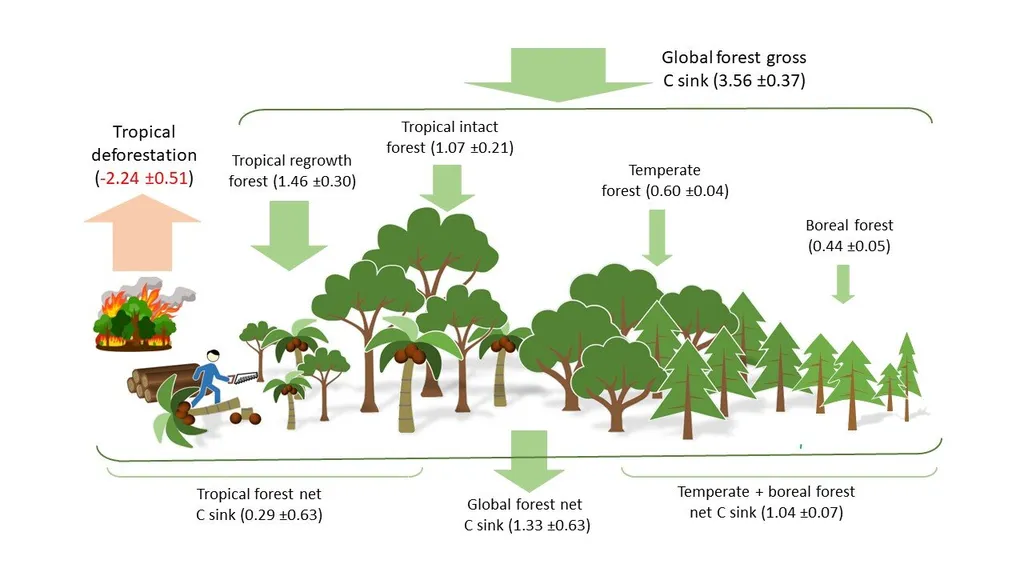In a groundbreaking study published in the journal *Ecological Indicators* (translated as “生态指标”), researchers have uncovered compelling evidence that intact boreal forests may be losing their ability to act as carbon sinks as they age. Led by Ni Huang from the State Key Laboratory of Remote Sensing Science at the Chinese Academy of Sciences, the research team utilized a space-for-time substitution approach to analyze net ecosystem productivity (NEP) across different forest ages. Their findings could have significant implications for the energy sector and climate mitigation strategies.
The study revealed two critical patterns: first, older forests exhibited significantly lower NEP compared to younger forests, indicating a decline in carbon sequestration capacity as forests age. Second, while temporal trends from 2001 to 2015 showed increasing NEP with forest age across most datasets, this positive trend was markedly weaker in older forests. “This suggests that climate variability may have partially masked the age-related declines in carbon sequestration,” explained Huang.
The research highlights that the reduction in NEP in aging forests is primarily due to a disproportionate decline in forest productivity, which decreases more rapidly than respiratory losses. “Our findings provide new evidence for previous hypotheses based on spatially separated sites using global-scale gridded NEP datasets,” Huang added. This means that intact boreal forests may progressively lose their carbon sequestration capacity as they age and could even become net carbon sources if climate-driven gains in productivity do not surpass respiratory losses.
For the energy sector, these findings are particularly relevant. Boreal forests play a crucial role in carbon sequestration, and understanding their long-term carbon balance is essential for accurate climate forecasting and mitigation strategies. As the world grapples with the impacts of climate change, the energy sector must consider the potential decline in carbon sinks and explore alternative methods to offset carbon emissions.
The study’s use of a space-for-time substitution approach and global-scale gridded NEP datasets provides a robust framework for future research. “This research not only advances our understanding of carbon dynamics in boreal forests but also underscores the need for innovative solutions to maintain and enhance carbon sinks,” said Huang.
As the energy sector continues to evolve, the insights from this study could shape future developments in carbon capture and storage technologies, as well as inform policies aimed at preserving and enhancing natural carbon sinks. The findings serve as a stark reminder of the intricate balance between natural ecosystems and climate change, urging stakeholders to act decisively to mitigate the impacts of a warming world.

